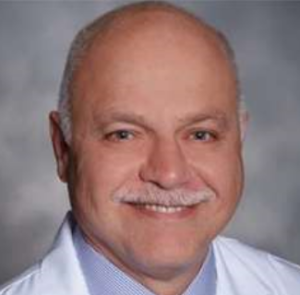
You’ve probably seen venous insufficiency in adults with its classic signs of purplish or red swollen lower legs, but why don’t kids get this?
After all, there are plenty of children out there who are very overweight and sedentary – which are two lifestyle risk factors that predispose adults to venous insufficiency.
Yes, children can develop venous insufficiency, but this is rare, says Seyed-Mojtaba Gashti, MD, a board certified vascular surgeon with Broward Health Medical Center in Florida.
“Most of these cases are related to a condition called Klippel-Trénaunay-Weber syndrome, a congenital disorder, and the treatment for the varicose veins are very different in this condition,” explains Dr. Gashti. “They should not be removed.”
Venous Insufficiency in Children
The risk factors that are associated with venous insufficiency, in addition to obesity and lack of exercise, include that of smoking, a history of blood clots in the legs, sitting or standing for long periods, pregnancy and family history.
As you can see, some of these factors don’t normally apply to children, especially smoking, deep vein thromboses (blood clots) and very especially pregnancy.
Nevertheless, it’s intriguing that with all the obese and inactive kids we see every day in the U.S., it’s remarkable that we also don’t see the tell-tale features of venous insufficiency in these kids.
A sedentary lifestyle minimizes the pump action of calf muscles on venous return, causing higher venous pressure, says emedicine.medscape.com
Chronic venous insufficiency, says the emedicine site, occurs more frequently in obese women.
Vocations that involve standing for long periods predispose individuals to increased venous pressure in dependent lower extremities, continues the site.
Children rarely stand for long periods. First chance they get, young kids, after standing for a while, will take a seat.
And of course, young kids don’t have jobs, so they get to sit pretty much whenever they want.
Yet at the same time, children are rarely forced to sit for the same extended periods that adults with desk jobs do. Sooner or later even the most inactive child will want to get up and be on their feet.
Other risk factors for chronic venous sufficiency are birth control pills and high blood pressure.
Now when venous insufficiency is observed in adults—it’s not surprising that in nearly every case, the adult is overweight and appears to be very sedentary, meaning, very poor muscle tone—suggesting a highly sedentary lifestyle.
It’s not a far leap to conclude that these adults were overweight and highly sedentary as children too.
It just took many years for this lifestyle to catch up with them in the form of venous insufficiency.
But not all overweight adults with a history of childhood obesity and lifelong lack of exercise eventually develop venous insufficiency.
Remember, there are other risk factors, and older age and family history are two of them.
Klippel-Trénaunay-Weber Syndrome
This can show itself at birth or during early childhood.
The exact cause is not definitely known.
Its physical appearance looks different from the classic appearance of chronic venous insufficiency you’ve probably seen many times in overweight adults who look very out of shape or highly de-conditioned.
KTWS is characterized by port wine stains and varicose veins and is not linked to being overweight or inactive.
Kids who are obese and not taught to embrace athletic participation or exercise have a head start at eventually developing chronic venous insufficiency later in life.
Of note is that a person who never embraces exercise is more likely to take up smoking and develop high blood pressure than one who relishes working out or sports participation.

























